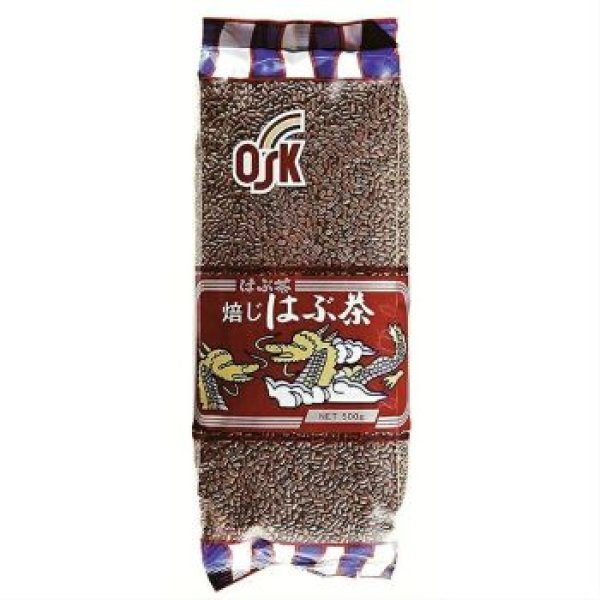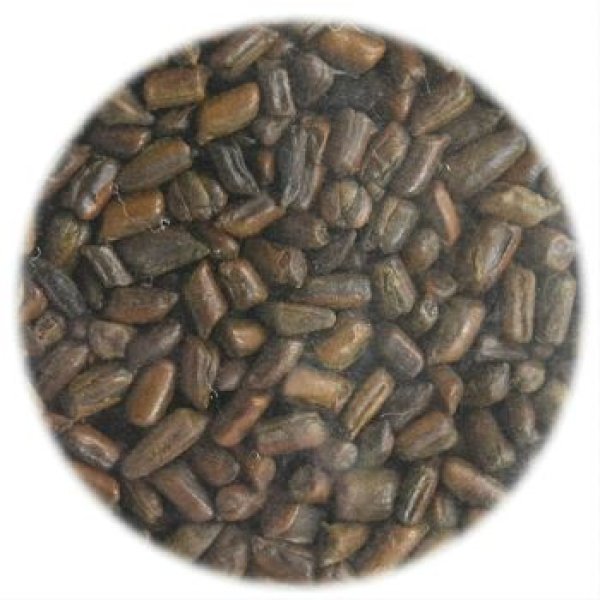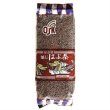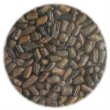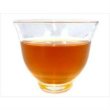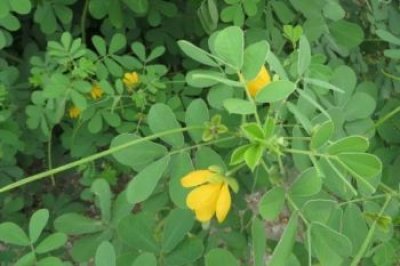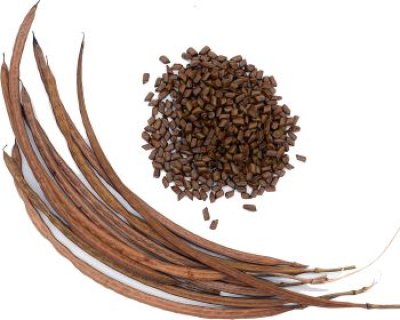焙じ はぶ茶 (煮出し) Roasted Habucha (boiled)
焙じ はぶ茶 (煮出し) Roasted Habucha (boiled)
販売価格: 270円(税込)
在庫あり
商品詳細
はぶ茶は、豆科の一年草エビスグサの種子で作られています。エビスグサは高さ80〜150cmぼどの植物で、葉は卵形です。
初夏に黄色い5弁の花を咲かせ弓形をした15cmほどの豆果をつけます。
この豆果の中に麦型をした濃褐色の種子が30〜50粒程一列に並んでつけます。
この種は中国では決明子と呼ばれ、目に活力を与えると言われています。
エビスグサには、アントラキノン誘導体がありこれがよいとされています。
おいしい召し上がり方 : 水1L沸かし、約10g入れてお使い下さい。
原産国:(エビスグサ)インド
Habu tea is made from the seeds of the annual legume plant, Ebisugusa. Ebisugusa is a plant that grows to a height of 80-150cm and has egg-shaped leaves.
In early summer, it produces yellow, five-petaled flowers and produces a bow-shaped pod that is about 15cm in size.
Inside the pod, about 30-50 dark brown, wheat-shaped seeds grow in a row.
In China, these seeds are called Cassia seeds(Ketsumeishi), and are said to energize the eyes.
Ebisugusa contains anthraquinone derivatives, which are said to be good for the eyes.
How to enjoy: Boil 1L of water and add about 10g.
Country of origin: (Ebisugusa) India
初夏に黄色い5弁の花を咲かせ弓形をした15cmほどの豆果をつけます。
この豆果の中に麦型をした濃褐色の種子が30〜50粒程一列に並んでつけます。
この種は中国では決明子と呼ばれ、目に活力を与えると言われています。
エビスグサには、アントラキノン誘導体がありこれがよいとされています。
おいしい召し上がり方 : 水1L沸かし、約10g入れてお使い下さい。
原産国:(エビスグサ)インド
Habu tea is made from the seeds of the annual legume plant, Ebisugusa. Ebisugusa is a plant that grows to a height of 80-150cm and has egg-shaped leaves.
In early summer, it produces yellow, five-petaled flowers and produces a bow-shaped pod that is about 15cm in size.
Inside the pod, about 30-50 dark brown, wheat-shaped seeds grow in a row.
In China, these seeds are called Cassia seeds(Ketsumeishi), and are said to energize the eyes.
Ebisugusa contains anthraquinone derivatives, which are said to be good for the eyes.
How to enjoy: Boil 1L of water and add about 10g.
Country of origin: (Ebisugusa) India
その他紹介
-
中央アメリカ原産で、世界の熱帯各地に帰化分布している一年草です。日本へは18世紀前半に、中国南部からもたらされました。
葉は、丸みを帯びた小葉6枚からなる偶数羽状複葉です。花はうつむき加減に咲き、マメ科に多い蝶形花ではなく、5枚の花弁がはっきり判る形態をしています。
種子は生薬のケツメイシ(決明子)で、民間療法に多く用いられています。
「はぶ茶」は同属のハブソウの種子を用いていたことによる名称ですが、エビスグサの方が果実の莢が長く、たくさんの種子が収穫できることもあり、現在ではもっぱらエビスグサが使われます。
【生薬名】ケツメイシ(決明子)
【薬用部分】種子
【用途】おもに民間療法で、便通を改善する整腸薬として煎用される。
【成分】アントラキノン誘導体(エモジン他)など
【原産地】中央アメリカ
新常用和漢薬集「ケツメイシ」
Native to Central America, this annual plant is naturalized in tropical regions around the world. It was brought to Japan from southern China in the early 18th century.
The leaves are even-pinnate compound leaves consisting of six rounded leaflets. The flowers bloom downwards, and are not butterfly-shaped like those found in many legumes, but have five clearly visible petals.
The seeds are Cassia (herbal medicine, and are often used in folk medicine.
The name "Habu tea" comes from the fact that the seeds of the same genus, Cassia japonica, were used, but since the fruit pods of Cassia are longer and more seeds can be harvested, Cassiais now used exclusively.
[Herbal medicine name] Cassia(cassia seeds)
[Medicinal part] Seeds
[Uses] Mainly used in folk medicine as a decoction to improve bowel movements.
[Ingredients] Anthraquinone derivatives (emodin, etc.), etc.
[Origin] Central America
New collection of commonly used Japanese and Chinese medicines "Cathocarpus sieboldii"
-
東洋医学の効能
[肝胆]の炎症を鎮めて、目の機能改善をします。目の充血などの眼疾患全般に用いられます。
また、緩下作用があり、軽い便秘を治します。その場合はお茶の代用として服用します。
適応症
目の充血・腫痛、涙が多い、緑内障、夜盲症、頭痛、めまい、目のかすみ、鼓腸、習慣性便秘、炎症性の腫れもの、乾癬などの皮膚病など
Oriental medicine benefits
Soothes inflammation of the liver and gallbladder and improves eye function. Used for all eye diseases such as bloodshot eyes.
Also has a laxative effect and cures mild constipation. In that case, take it as a substitute for tea.
Indications
Red and swollen eyes, excessive tearing, glaucoma, night blindness, headache, dizziness, blurred vision, flatulence, habitual constipation, inflammatory swelling, skin diseases such as psoriasis, etc.

